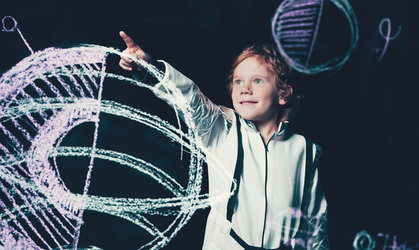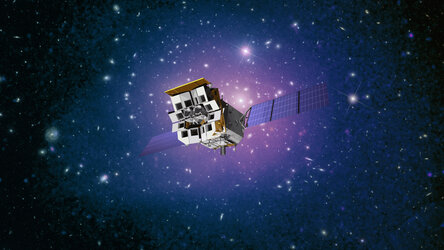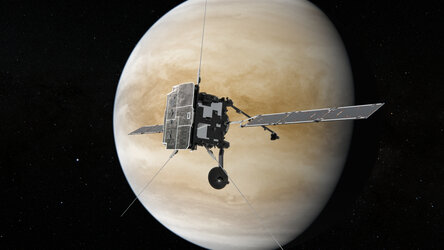Accept all cookies Accept only essential cookies See our Cookie Notice

About ESA
The European Space Agency (ESA) is Europe’s gateway to space. Its mission is to shape the development of Europe’s space capability and ensure that investment in space continues to deliver benefits to the citizens of Europe and the world.
Highlights
ESA - United space in Europe
This is ESA ESA facts Member States & Cooperating States Funding Director General Top management For Member State Delegations European vision European Space Policy ESA & EU Responsibility & Sustainability Annual Report Calendar of meetings Corporate newsEstablishments & sites
ESA Headquarters ESA ESTEC ESA ESOC ESA ESRIN ESA EAC ESA ESAC Europe's Spaceport ESA ESEC ESA ECSAT Brussels Office Washington OfficeWorking with ESA
Business with ESA ESA Commercialisation Gateway Law at ESA Careers Cyber resilience at ESA IT at ESA Newsroom Partnerships Merchandising Licence Education Open Space Innovation Platform Integrity and Reporting Administrative Tribunal Health and SafetyMore about ESA
History ESA Historical Archives Exhibitions Publications Art & Culture ESA Merchandise Kids Diversity ESA Brand Centre ESA ChampionsLatest
Space in Member States
Find out more about space activities in our 23 Member States, and understand how ESA works together with their national agencies, institutions and organisations.
Science & Exploration
Exploring our Solar System and unlocking the secrets of the Universe
Go to topicAstronauts
Missions
Juice Euclid Webb Solar Orbiter BepiColombo Gaia ExoMars Cheops Exoplanet missions More missionsActivities
International Space Station Orion service module Gateway Concordia Caves & Pangaea BenefitsLatest
Space Safety
Protecting life and infrastructure on Earth and in orbit
Go to topicAsteroids
Asteroids and Planetary Defence Asteroid danger explained Flyeye telescope: asteroid detection Hera mission: asteroid deflection Near-Earth Object Coordination CentreSpace junk
About space debris Space debris by the numbers Space Environment Report In space refuelling, refurbishing and removingSafety from space
Clean Space ecodesign Zero Debris Technologies Space for Earth Supporting Sustainable DevelopmentLatest
Applications
Using space to benefit citizens and meet future challenges on Earth
Go to topicObserving the Earth
Observing the Earth Future EO Copernicus Meteorology Space for our climate Satellite missionsCommercialisation
ESA Commercialisation Gateway Open Space Innovation Platform Business Incubation ESA Space SolutionsLatest
Enabling & Support
Making space accessible and developing the technologies for the future
Go to topicBuilding missions
Space Engineering and Technology Test centre Laboratories Concurrent Design Facility Preparing for the future Shaping the Future Discovery and Preparation Advanced Concepts TeamSpace transportation
Space Transportation Ariane Vega Space Rider Future space transportation Boost! Europe's Spaceport Launches from Europe's Spaceport from 2012Latest

Comet on 6 August 2014 and 6 August 2015
Thank you for liking
You have already liked this page, you can only like it once!
What a difference a year can make. Rosetta arrived at Comet 67P/Churyumov–Gerasimenko on 6 August 2014, achieving rendezvous at a distance of 100 km before moving even closer to the nucleus in the following weeks. The image shown on the left was taken with the navigation camera, NavCam, on rendezvous day, when Rosetta was about 121 km out.
At the time, the curious shape of this double-lobed object, so familiar to many now, had only been revealed a couple of weeks earlier. Over the course of the following 12 months, Rosetta has flown around the comet at a wide range of distances, from as far as a few hundred kilometres and as close as 6 km from its surface, investigating different regions as they came into view.
The image on the right was taken on 6 August 2015, exactly a year to the day of Rosetta's historic rendezvous, from a distance of 261 km. During this time, the comet has moved along its orbit much closer to the Sun – from almost 540 million km last year to around 186 million km this week – and the intensity of the sunlight has increased significantly, by more than seven fold, greatly boosting the comet’s activity. As the solar radiation has been warming its frozen ices, these have sublimated, turning into gas, and pouring out into space. The gas drags the dust along with it and together they form the comet’s fuzzy atmosphere, or coma.
The comet’s increased exposure to the Sun’s energy and its resulting activity can be discerned in several differences between these two images, which have been processed in a similar way in order to enable a meaningful comparison.
First, because the comet was further from the Sun in August 2014, it both received and reflected less sunlight. As a result, the two images presented here were taken using different exposure times (3 seconds on 6 August 2014; 0.79 seconds on 6 August 2015), but they have been scaled in intensity here. Thus in the 2014 image, the comet nucleus appears darker than in the 2015 image.
Equally importantly, the region around the nucleus is dark in 2014, as there is relatively little material flowing away from it. The 2015 counterpart is releasing prominent outflows and jets of material, and the overall environment is brighter in the recent image, with unlit patches of the nucleus standing out as a silhouette against it.
The increased activity is the reason for the larger distance of Rosetta from the comet today: the increased concentration of gas and dust over the last few months means the spacecraft has had to back off in order to avoid confusing its startrackers. It is now studying the comet from safer distances, and is currently operating some 300 km out.
In the earlier image, the small comet lobe is in the foreground, with the broad circular depression known as Hatmehit clearly visible, while the large lobe lies further away to the top right. In the more recent image, the small lobe is pointing towards the top right of the image, with the Hatmehit region still visible, albeit from a changed viewing geometry.
Portrayed in the right image are also the comet’s neck region and different portions of the large lobe, some of which only came into view in the past few months, as seasons changed on the comet in May 2015.
This week, on Thursday 13 August, the comet reaches its closest point to the Sun along its orbit, known as perihelion. Join the adventure by watching our Google+ Hangout scheduled for 13:00–15:00 GMT (15:00–17:00 CEST).
-
CREDIT
ESA/Rosetta/NavCam – CC BY-SA IGO 3.0 -
LICENCE
ESA Standard Licence

Year at a comet, August 2014

Comet on 31 August 2014 – NavCam montage

Comet on 10 August 2014 - NavCam

Comet activity on 2 August 2014















 Germany
Germany
 Austria
Austria
 Belgium
Belgium
 Denmark
Denmark
 Spain
Spain
 Estonia
Estonia
 Finland
Finland
 France
France
 Greece
Greece
 Hungary
Hungary
 Ireland
Ireland
 Italy
Italy
 Luxembourg
Luxembourg
 Norway
Norway
 The Netherlands
The Netherlands
 Poland
Poland
 Portugal
Portugal
 Czechia
Czechia
 Romania
Romania
 United Kingdom
United Kingdom
 Slovenia
Slovenia
 Sweden
Sweden
 Switzerland
Switzerland
























